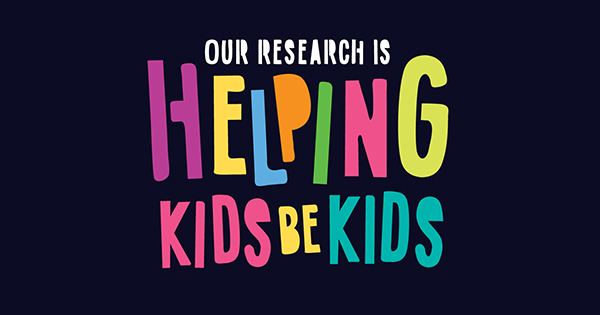Search

Discover the stories of children whose lives have been impacted by Telethon Kids Institute research.
Research
A prevalence study on parents with intellectual disability and their childrenMelissa Helen O'Donnell Leonard BPsych (Hons), MPsych, GradDip Ed, PhD MBChB MPH Honorary Research Associate Principal Research Fellow +61 419 956
Research
A trauma-focused program for childhood and adolescent dissociationDissociation is the act of separating oneself from reality and is often used by children and young people to disconnect from traumatic experiences.
Research
Aboriginal and Torres Strait Islander Partnerships to Prevent Permanent Lung Disease (APPLE Study)In partnership with Aboriginal health services, Government agencies and communities, we will develop and implement evidence-based strategies to improve the detection and management of chronic wet cough in Aboriginal and Torres Strait Islander children.
Research
Alcohol-Related Harm in Young People (Oct 2015+)This project aims to inform harm prevention and minimisation strategies by investigating outcomes and points for early intervention in young people with alcohol-related harm. Researchers will also compare outcomes between Aboriginal and non-Aboriginal youth.
Research
An immunometabolomic approach to unmask developmental regulation of innate immunity and asthma riskDeborah James Pat Strickland Read Holt PhD PhD, DSc, FRCPath, FRCPI, FAA Head, Pregnancy and Early Life Immunology Honorary Research Associate
Research
An investigation of parental mental health among the Aboriginal population in Western Australia, and its impact on children’s outcomesCarrington Fiona Shepherd Stanley PhD FAA FASSA MSc MD FFPHM FAFPHM FRACP FRANZCOG HonDSc HonDUniv HonFRACGP HonMD HonFRCPCH HonLLB (honoris causa)
Research
Comparing home polysomnography with transcutaneous CO2 monitoring to laboratory polysomnography in children with neuromuscular disordersClinical utility of home polysomnography in children with neuromuscular disorders is limited by lack of evidence that sleep-disordered breathing can be reliably identified and inability to diagnose hypoventilation because carbon dioxide is not measured.
Research
Dog Ownership, Physical Activity, and Mental Health in Mid-to-Older Aged Adults: Findings From the HABITAT Cohort StudyDog ownership is a potential strategy for maintaining physical activity levels and supporting healthy aging. This study examined longitudinal effects of dog ownership and dog walking on physical activity and mental health in mid-to-older aged adults.
Research
Pathways to Adolescent Pregnancy in Southeast Asia: Qualitative Evidence From Lived Experiences of Girls in Four CountriesHistorically, adolescent pregnancy has been conceptualized as an outcome of child marriage, but in Southeast Asia, the contexts and drivers of adolescent pregnancy are less well-understood. This study examines the relationship between adolescent pregnancy and child marriage and explores the drivers of pregnancy in Cambodia, Indonesia, Lao People's Democratic Republic and Malaysia among adolescents who have experienced pregnancy.
